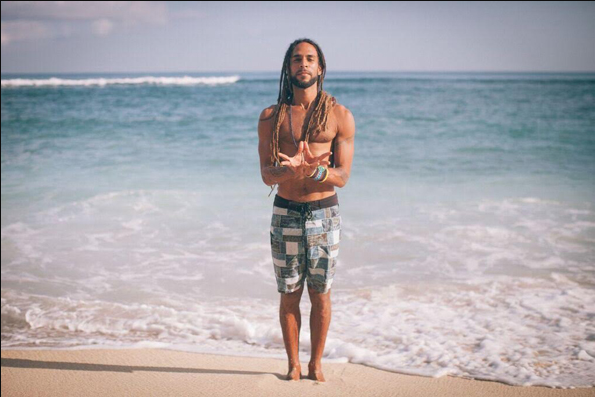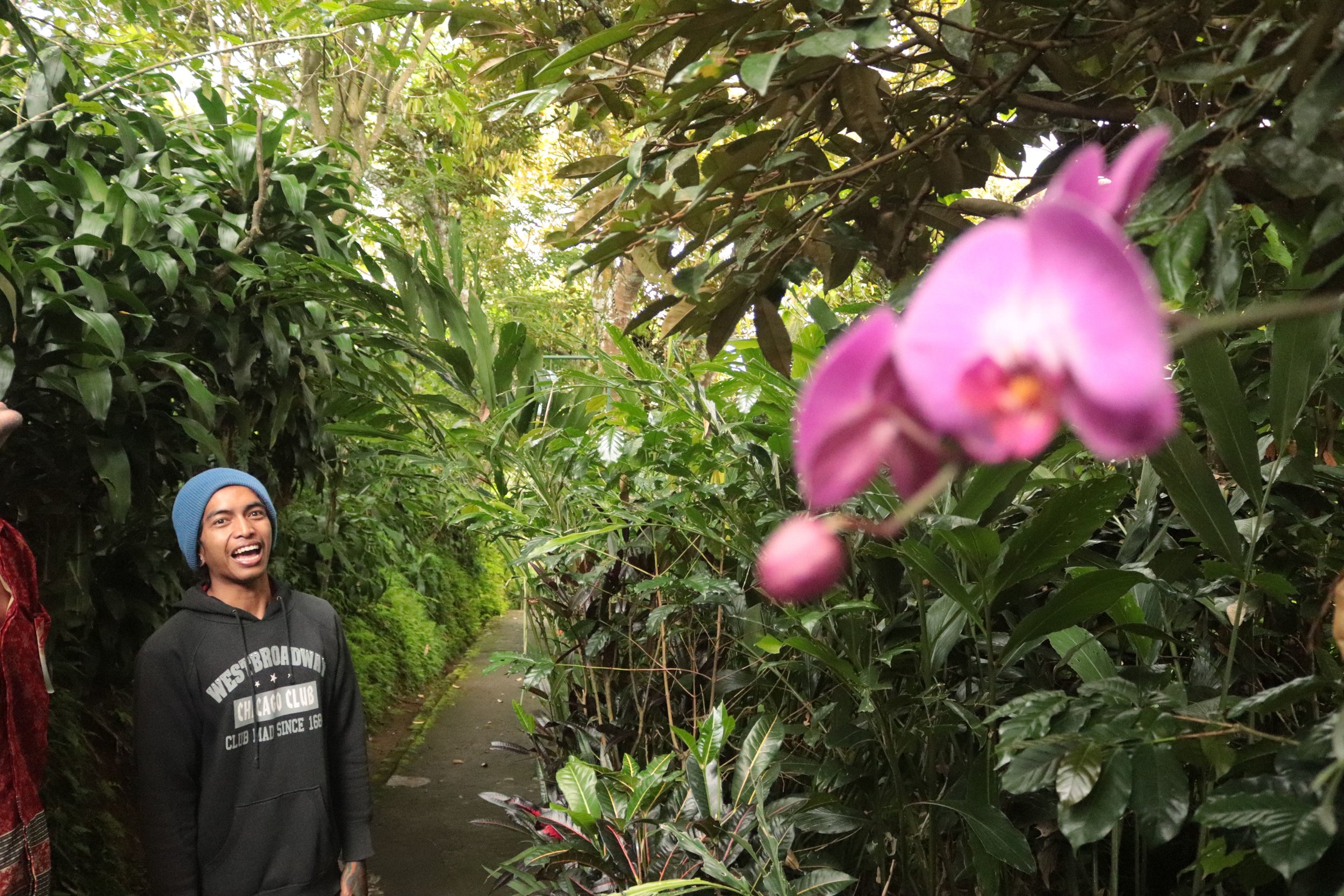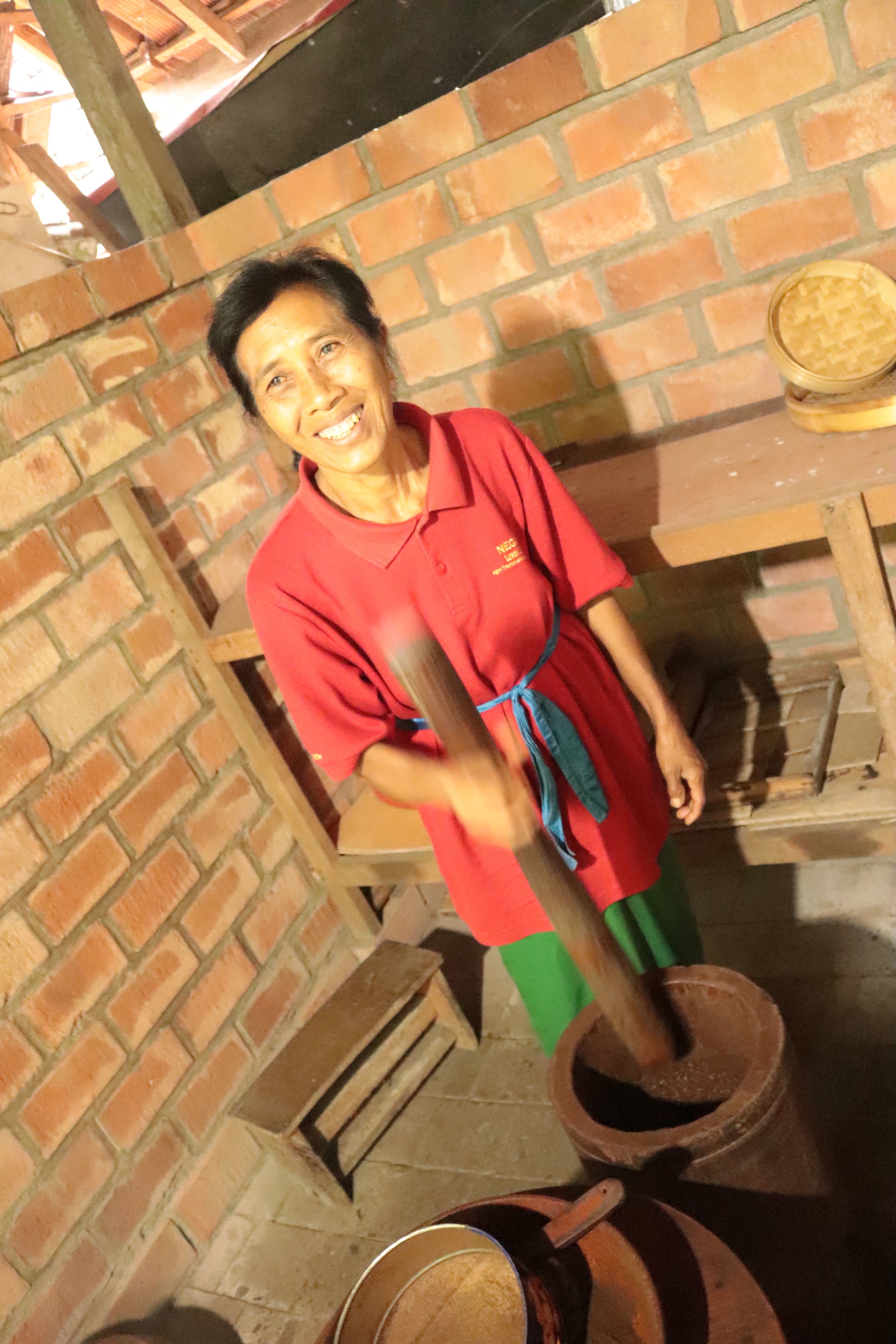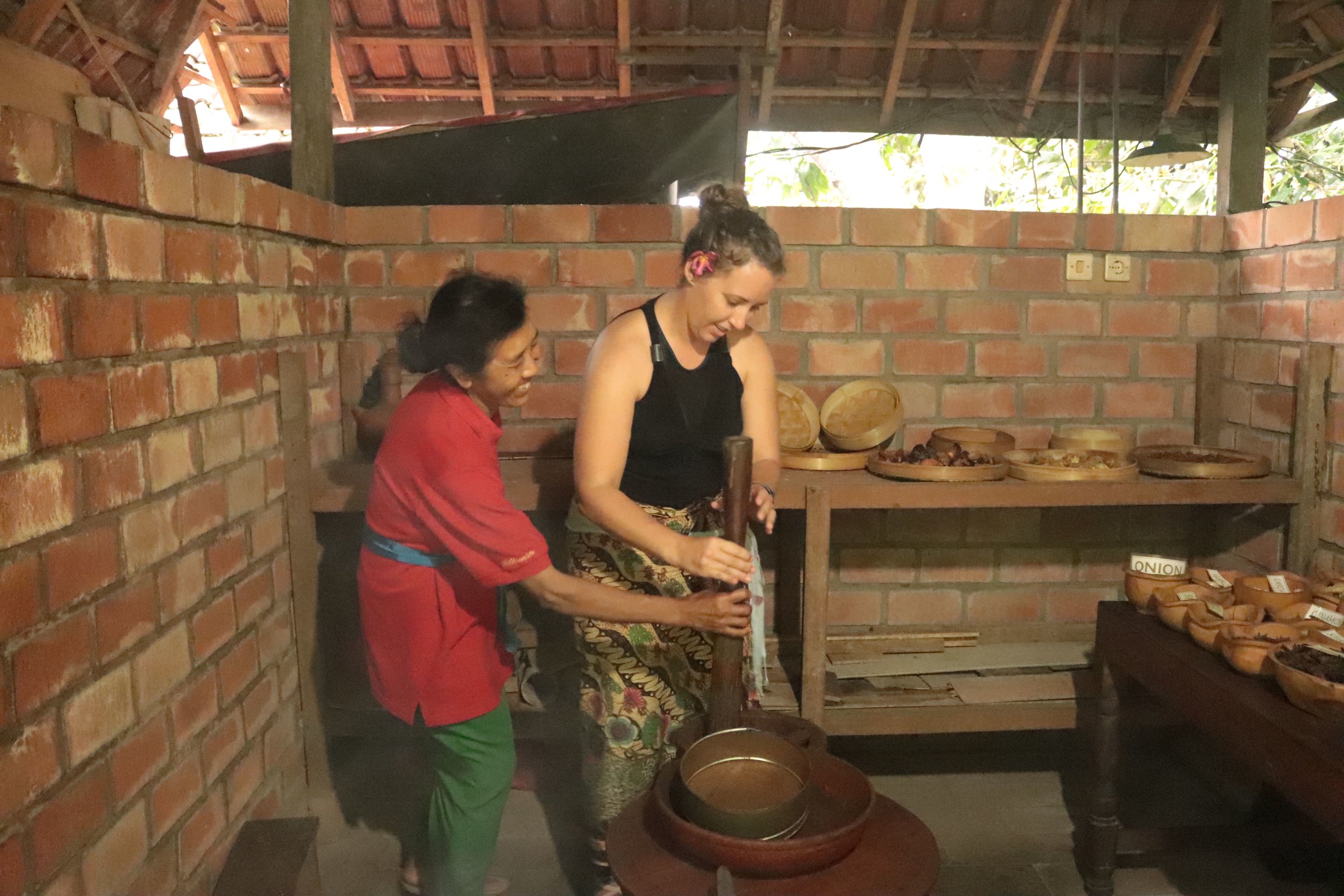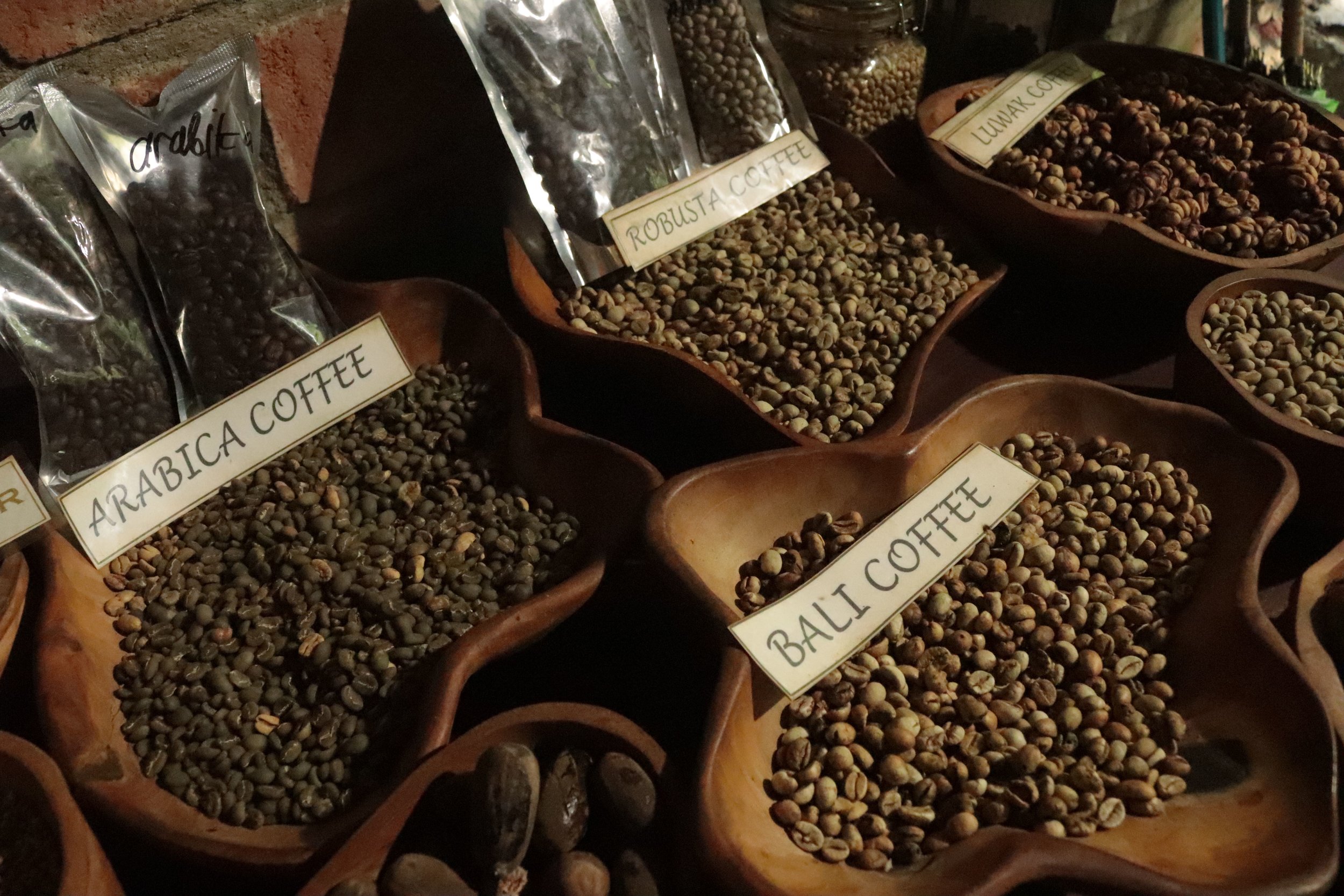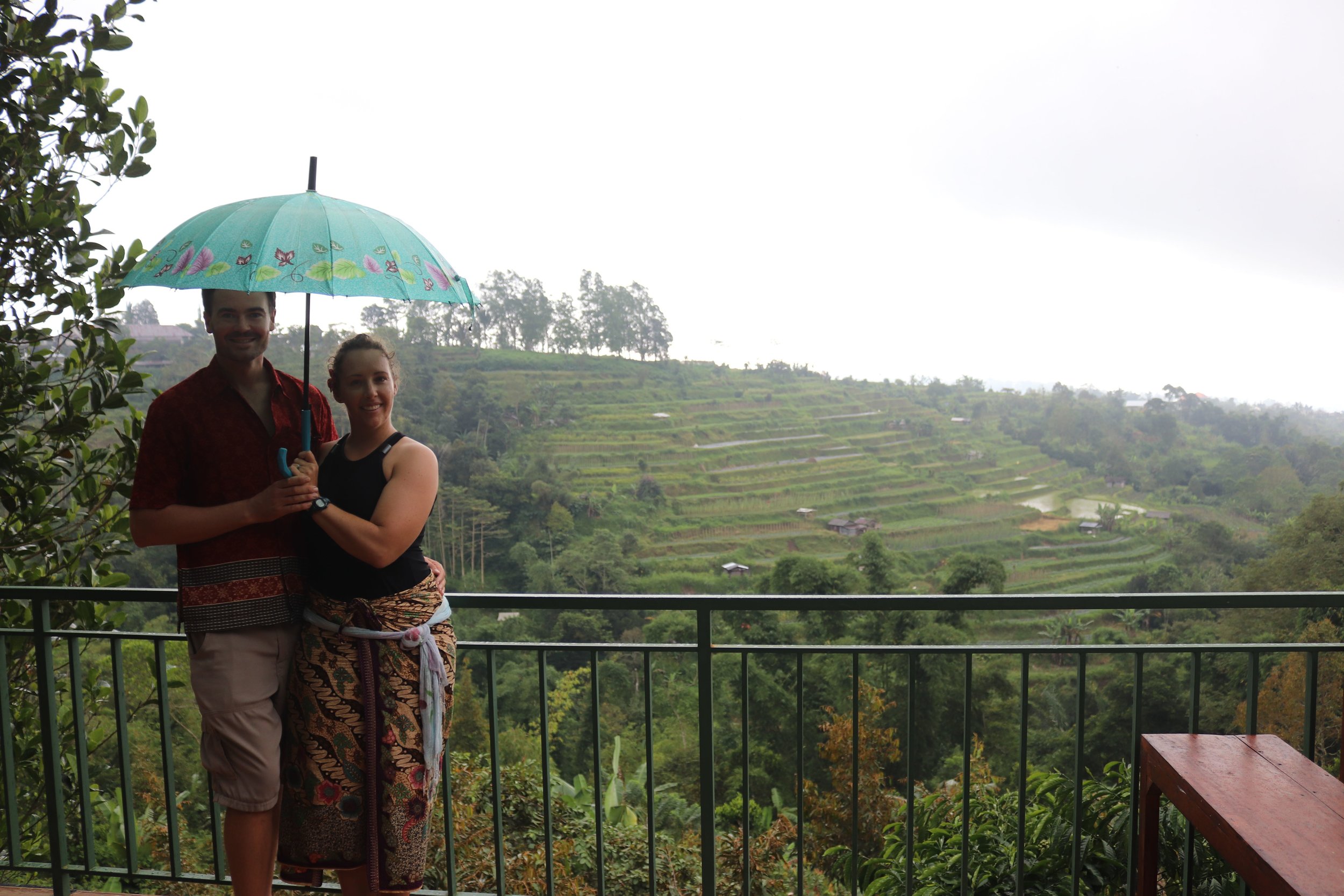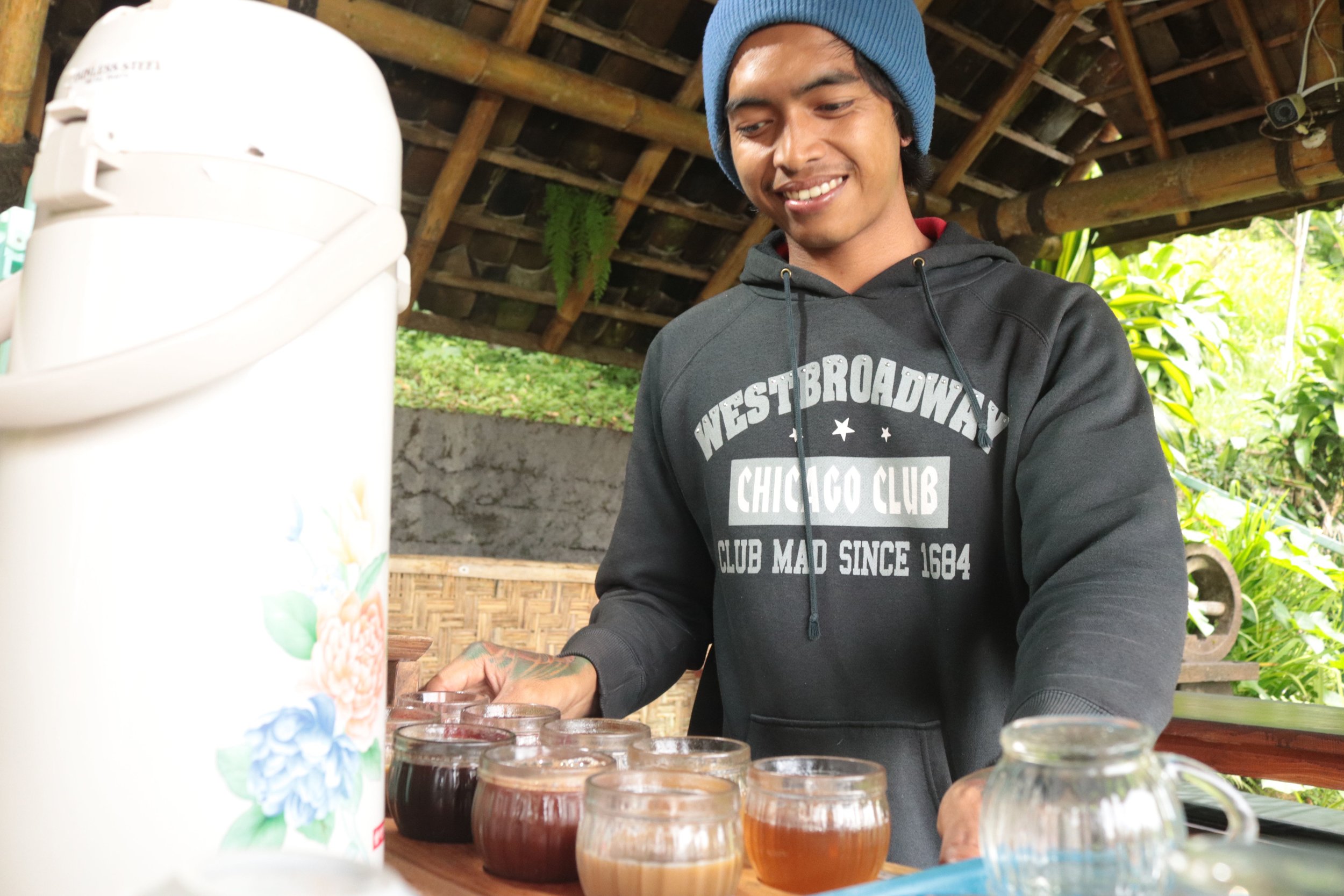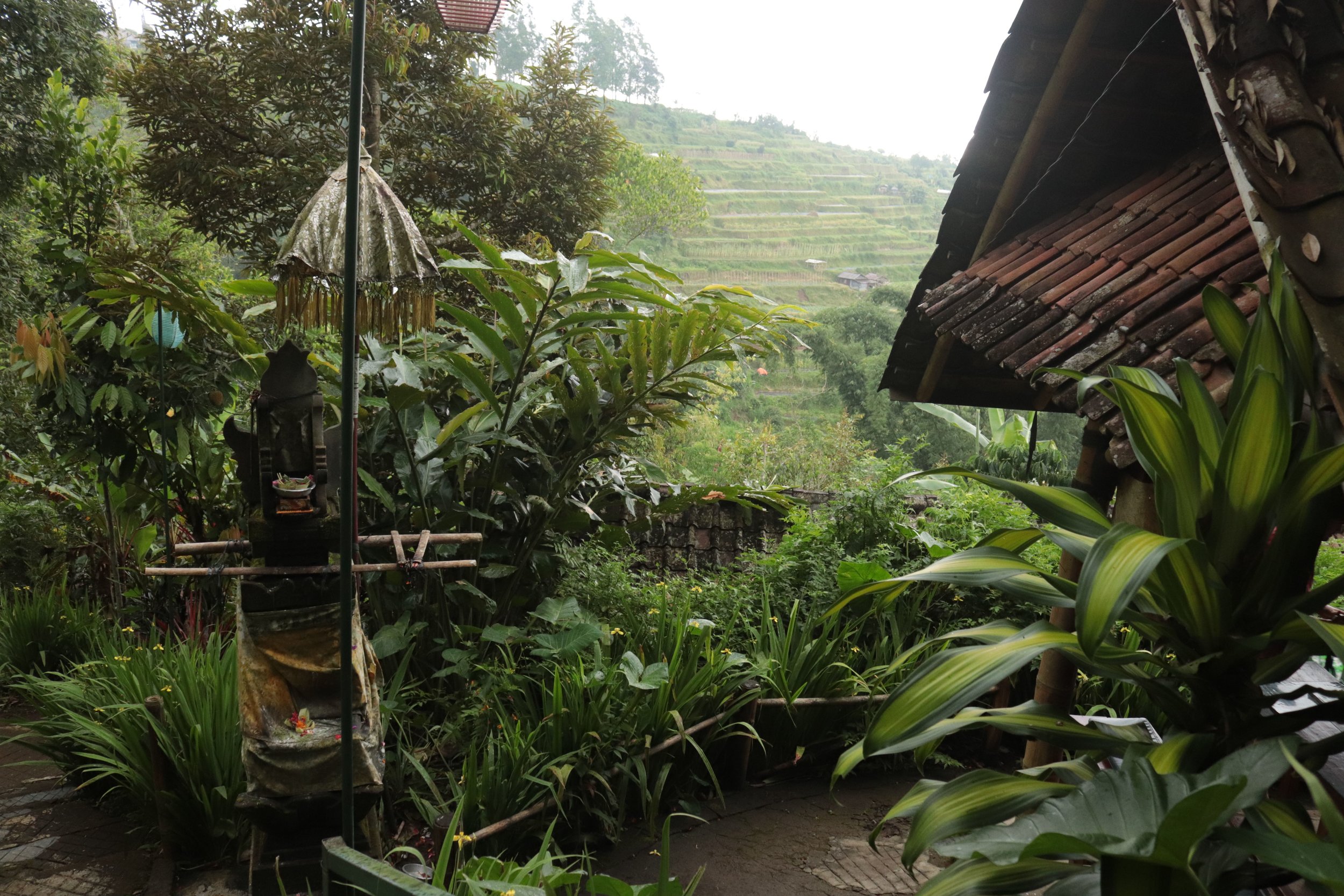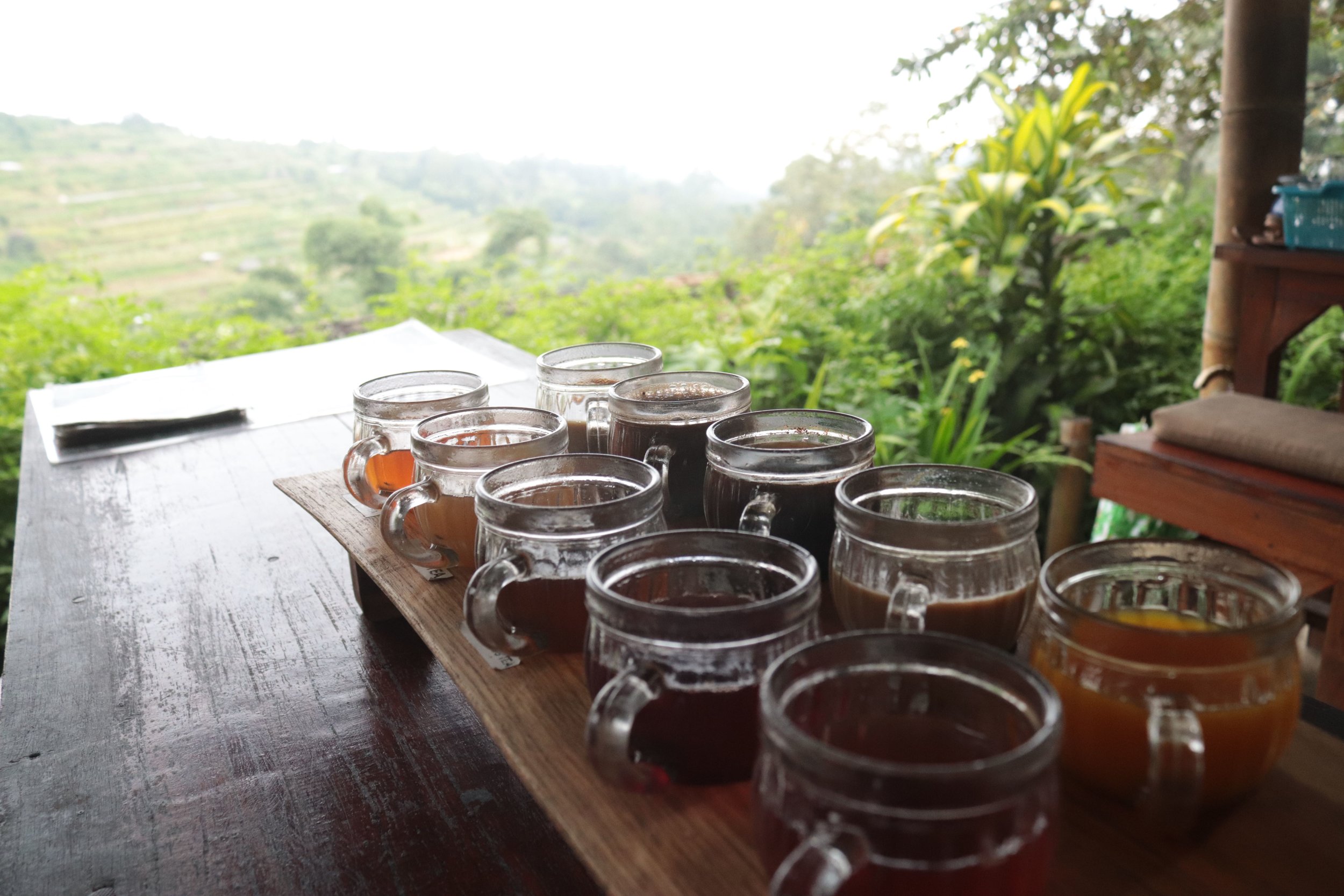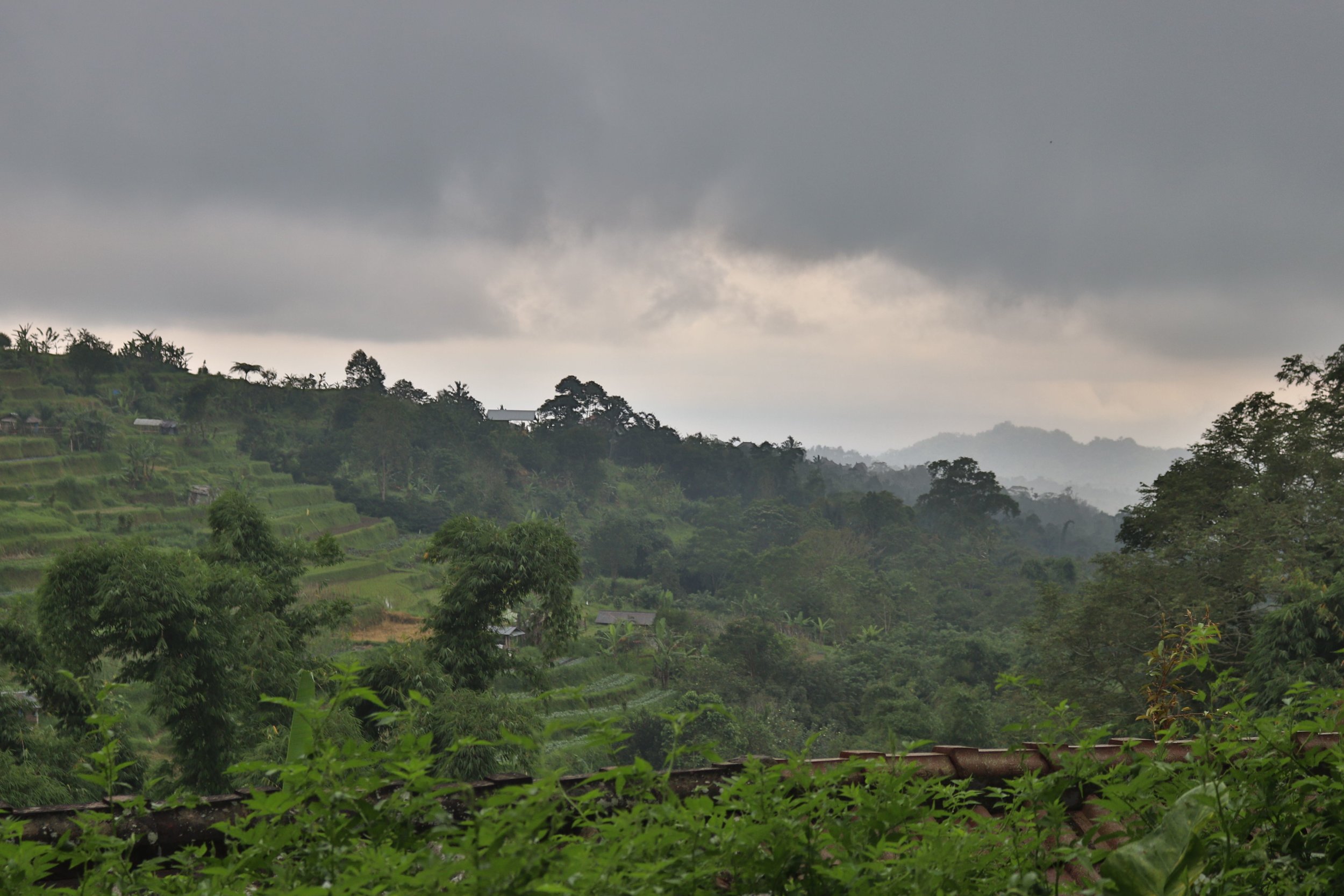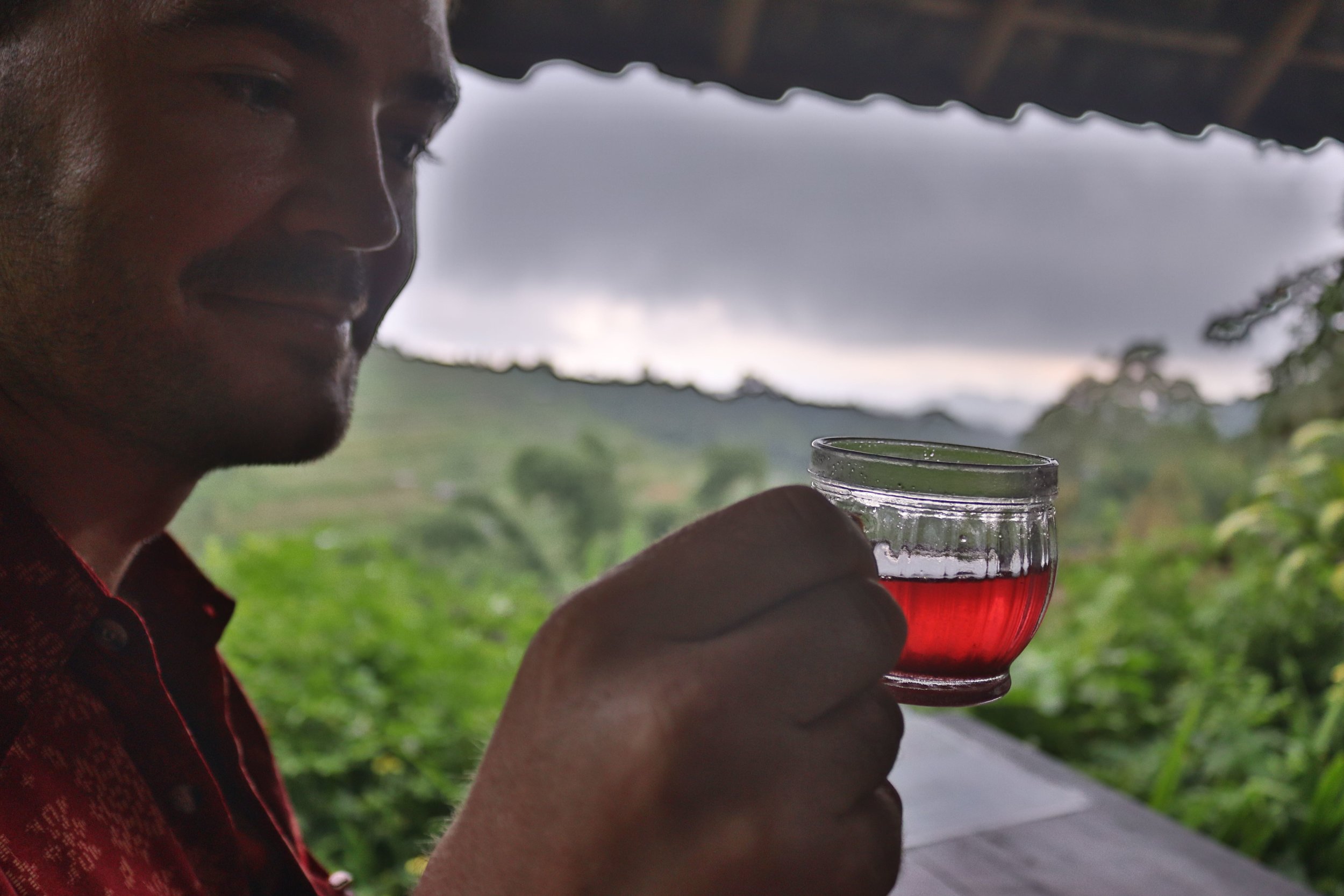I turn the bottle over in my hand, read the price tag and gag on my chi. $30.00 US for an "Ionized Crystal" spray. “Mist this spray over your crown chakra to increase feelings of universal warmth and love.” You have to be kidding, I think as I set the bottle down and see Andrew joining me in the lobby. We just finished our morning yin yoga and meditation session with one of our favorite teachers. We head over to the cafe and order healthy food. I sip hot tea.
Andrew scrolls through Wikipedia’s page on the Hindu faith. “Wow, this is so interesting.” He says as he reads me snippets. “Hinduism is often referred to as a philosophy or way of life rather than a religion. Practitioners are encouraged to ponder new ideas and revise their belief structure based on new information. Hindus believe questioning authority, internal debate and challenging of religious texts deepens understanding of the eternal truths and further develops tradition.”
I look around at the crowd in the cafe with the eye of a curmudgeon. Cliques of people roam in groups: the athletes wearing their yoga stretch pants and sports bras; the hippies from the 70s; a group with dreadlocks, pants of colorful fabric and macrame vests; then, Andrew. He sits at the cafe wearing a red and white striped polo shirt and cargo shorts. His bare feet are crossed beneath him as he pokes through his salad. Then he shifts subjects.
“Man, I bet he really gets the ladies…”
“Who?” I ask.
“Carlos of New Sexadonia.” I furrow my brow for a minute then realize he’s talking about the guy who taught the Thai Massage class and one of our Yin Yoga classes.
“Oh yeah,” I say, “Most assuredly.”
Carlos has a certain…spirit that would make him rather desirable, I suspect.
A screenshot of Carlos' handsome profile picture. Taken by someone else I don't know.
“I wonder where he’s really from? I don't think he is Balinese,” Andrew says, I thumb through the phone to see if he can find Carlos’s profile.
“Oh yep, Venezuela,” I confirm. At this point, our teachers have been from all over the world: one from England, two from California, apparently one from Venezuela. Wakua Blueflame seems to be from Indonesia, and Estee is from Bali. It’s been a mix, but it leaves me wondering whether the Balinese people actually do yoga or meditate. Per the usual, I’m feeling annoyed. Am I getting the proper experience if I am guided through my “Balinese yoga retreat” by several Californians and a guy from Venezuela?
We climb in the taxi for our daily dose of sightseeing with Wayan. From the back seat, I can hear Andrew taking Wayan through another turn of 20 Hindu Questions.
“If a person wanted to study Hinduism, what’s the best way to do it?” Most people study the ancient texts, meditate, find a good guru to help teach them along the way. There is even a four year Hindu University in Denpasar.
“Do you have a guru?” Yes.
“How does one go about obtaining a guru?”
Wayan thinks for a moment. “I chose my guru through a referral from a friend. My neighbor was working with this guru, and he really liked him. So, I asked him if he would be my guru and I liked him, too.”
“How much does a Guru cost?”
“Oh, no, Gurus really should not charge. There are all sorts of “gurus” in this world charging a lot of money. My guru, he is willing to teach and work with me for nothing. I give him rice, sometimes money, whatever I have at the time because I know he needs something to live, but he would teach me regardless. A real guru does it for the love of spiritual growth.”
Wayan falls silent for a moment.
“It’s hard to explain. You already have everything you need to know inside of you. You are your own guru, but sometimes it helps to have someone else helping you think things through.
Suddenly, I realize this answer may explain why few Balinese are teaching yoga at the studio. They are loathe to ask for money. “Wayan, do you do yoga and meditate?” I ask.
“Of course!” Wayan tells me, “Sometimes I work too much and I’d rather play with my daughter than do my yoga, but I meditate every morning and every evening.”
Satisfied with this, I return to my silence in the back seat. Today, we are wrapping up our tours with the “tourist necessities.” The first stop: a Lewak Coffee Plantation.
We are met by a young man who is studying English and tasked with showing us the varietals of herbs, flowers, and fruit growing in the garden. Everything is grown on site for the products they make: tea, coffee, chocolate, etc.
Our guide is also teaching us all we need to know about Lewaks and Lewak Coffee. This is a Lewak:
Shhhhh....he's sleeping.
A Lewak is a special kind of marsupial who loves coffee more than you, me, or any of those hipsters living in apartments near Seattle’s Pike’s Place. This little guy likes to go out in the dark of night and sift through coffee plants to find the very best, most delicious, most perfect tasting coffee beans — and eat them.
In the days of colonization, Dutch coffee growers were rather frustrated by the whole notion and spent much effort trying to eradicate the pesky coffee lover. The Lewak ate so many beans (and the Dutch colonizers were exporting so much coffee) that at a certain point, there was no coffee beans left for the Balinese locals who loved to drink coffee, too. Longing for their cup of brew, Balinese locals started to look around the scraps to see if the Dutch left anything behind for them. They found nothing, until one day a local probably stepped in a pile of Lewak Scat. I imagine him hopping around trying to clean off poo from the bottom of his foot when he realizes what is left behind: coffee beans, only partially digested coffee beans.
Before it's washed...
This enterprising local gathered up the poo and took it to the river to be washed. Or maybe, it had already been partially cleaned away by rain. He washed and rinsed and scoured to get all the poo away from the beans. Then, he peeled away the bean’s outer coating, still in tact and washed and rinsed more. Finally, he held in his hand a perfectly clean coffee bean the Dutch had not already taken away.
Coffee bean in its pod, Coffee bean out of it's pod.
Lewak Coffee Beans Post Cleansing
I imagine his buddy finds him and asks “What in the world are you doing?”
And this enterprising Balinese man says: “I FOUND COFFEE BEANS!”
“Where?!” His friend asks.
“You don’t want to know.” The Balinese local leans over his fire and begins roasting his found coffee bean treasure until it’s a perfect roasted brown. He grinds it up, tosses a spoonful in he and his buddy’s mug, then pours boiling water over the top.
Once it cools, they take their first sip. “WOW! That is the best coffee I’ve ever tasted! Where did you get that!?” His friend asks.
The man who found the treasure scowls at his mug and thinks “It IS really good, against all odds. Should I tell him?” He shrugs and enjoys another sip. Soon, he is sharing with all his friends and the Balinese locals are back to being rich in coffee - the kind the Dutch would never want to take.
Until…
Fast forward to 2007. The Dutch are long gone, but movie comes out in America called “The Bucket List” with Morgan Freeman and Jack Nicholson in which the characters decide to complete all the things they want to do in their lives before they die. One character has heard of Lewak Coffee and he must go to Bali to get some. Overnight, the Balinese Lewak Coffee went from being an obscure treat few had heard about to one of the “must-do tourist experiences of Bali.” The price of Lewak coffee skyrockets, and suddenly it is the export of choice to send out to the big cities all over the world to be sold for $50 per cup. As we learned, if you go through the trouble of traveling all the way to Bali you can knock that price down to only $5 US per cup.
As we walk down the path toward the cafe, we hear a something like a drumbeat, a soft hollow sound of wood on metal. We find a woman roasting coffee, crushing beans using the blunt end of a wooden mallet, then tapping it in her rhythm against the side of her cast iron pot to knock off bits and pieces of the coffee beans. She smiles, “Do you want to try?”
Andrew and I each attempt to mimic her rhythm. We are clumsy and awkward, we don’t make the music.
She shows us the different types of coffee she is roasting, spices and fruit skins she is drying for tea.
Then, we hustle up to the tasting bar where we look over the acres and acres of plantation soaking up a mist of rain that is now starting. We taste a series of delicious teas made from mangosteen fruit, nuts, herbs and spices.
Then, it’s time for the Lewak show. Our guide opens a glass case and exposes a coffee machine with stainless steel hoses, glass beakers and all sorts of pizzaz. He loads coffee beans into the machine and adds water which is taken from one little pot to another to heat the water in a proper way. Then, the coffee is done, and it is poured into our mug.
Andrew and I peek over our cup and sniff. “Smells like coffee,” Andrew says. He takes the little handle in his fingers and tips the mug until a sip of coffee spills into his mouth. He swallows and smacks his tongue. “Hmm. It’s really smooth.”
I am still doubting that I can physically muster the gumption to sip from the brew made of beans pre-marinated in the intestinal juice of a furry (albiet cute) animal. But, I didn’t sail all this way to look at a cup of coffee, so I take it in hand and raise it to my lips, too. I agree. It is the smoothest coffee I’ve ever tried: the roast is rich, but the bitter edge that comes with most coffee is gone. I sip again.
Little did everyone know, the Lewak was just trying to help! Now, no one is trying to eradicate the Lewak; the little guy can have all the tasty beans he wants.
Then, Wayan gathers us up and tucks us back in the taxi to continue our Hindu 20 Questions.
“Do you have a mantra?” Andrew asks. Yes.
“How do you pick a mantra?”
Next thing I know, our taxi driver is instructing us on the purpose of and the process for choosing a mantra. “The easiest one to remember and probably the most powerful is simply chanting “OM” three times.” He tells us. He takes a deep breath with his belly and releases a long “Ohhhhhhhhoooooooooooooooouuuuuuuuuuuu-mmmmmmmmmmmmmmmmmmmmmmmmmmmm……” His voice is deep and rumbles from the dent in his throat at the base of his neck.
Another breath, “Ohhhhhhhhoooooooooooooooouuuuuuuuuuuummmmmmmmmmmmmmm-mmmmmmmmmmmmm……” Long and slow, the sound is more of a vibration than a word, his tone matches the rumble of the taxi wheels over the road.
A third breath, “Ohhhhhhhhoooooooooooooooouuuuuuuuuuuummmmmmmmm-mmmmmmmmmmmmmmmmmmm……”
He falls silent for a few minutes as we drive. Then says, “It means God. When you chant “OM” you are calling the divine energy to you.”
With this, I almost giggle from happiness in the backseat. When was the last time your taxi driver instructed you on the best methods to connect with the Universe? Would you expect a Devout Pastafarian wearing a polo shirt and cargo shorts to embrace Universal Truths in a “balinese spiritual yoga retreat”? What is the most unlikely place to find the world's most delicious coffee? These are happy surprises that remind me what is truly good always exists, glowing like stars in the contrast of darkness.


